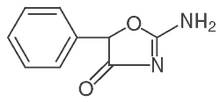The Institute for Clinical Systems Improvement has released a new guideline on attention-deficit/hyperactivity disorder (ADHD). "Diagnosis and Management of Attention Deficit Hyperactivity Disorder in Primary Care for School Age Children and Adolescents" is available online at www.icsi.org.
The presentation of ADHD to the family physician may range from straightforward to quite complex. Many patients who present with learning or behavior problems and who are suspected of having ADHD can be adequately evaluated and managed in the primary care setting, allowing for subspecialty or multidisciplinary consultation in more complex cases.
The guidelines include the following key points:
* Evaluate children and adolescents suspected of having ADHD by using the criteria found in the Diagnostic and Statistical Manual of Mental Disorders, 4th edition (DSM-IV) or the primary care version (DSM-PC). Consistent and appropriate diagnostic tools should be used.
* Screen all patients for other primary conditions or comorbidities and appropriately refer to subspecialty consultation for further evaluation.
* Coordinate a simultaneous multimodal management plan that involves parent-, child-, and school-focused interventions.
* Establish communication and intervention links with related systems (e.g., schools, mental health professionals).
* Establish appropriate use of psychostimulants in initial and ongoing management of patients with ADHD.
* Provide consistent and comprehensive monitoring and care coordination for all patients with ADHD including pharmacologic and nonpharmacologic interventions, identification and management of emerging comorbidities, and the impact of ADHD on patients, their families, and schools.
Regarding pharmacotherapy, stimulant medications are considered first-line therapy because they are effective in 70 to 80 percent of children with ADHD. First-line agents include methylphenidate (Ritalin), dextroamphetamines (Dexedrine), and amphetamine salts (Adderall), while second-line agents include bupropion (Wellbutrin), guanfacine (Tenex), imipramine (Toframil), desipramine (Norpramine), clonidine (Catapres), and pemoline (Cylert). There is no clear advantage of one first-line stimulant over another, although individual patients may respond differently.
COPYRIGHT 2003 American Academy of Family Physicians
COPYRIGHT 2003 Gale Group



